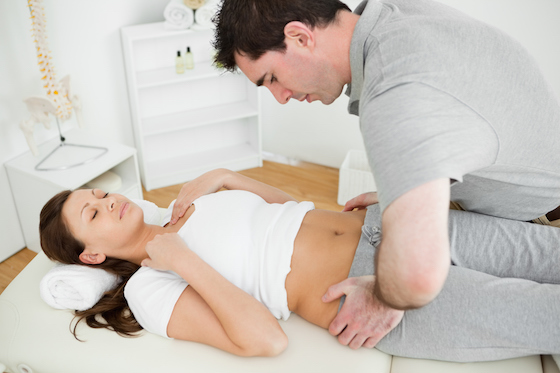
Written by Becky Hanna:
31 million Americans are currently suffering from low back pain and an estimated 80% of us will have an incident of low back pain at some point in our lifetime. However, back pain can be a sign of low back, hip or sacroiliac joint dysfunction so how can you determine the source of your discomfort?
Hip Pain
Hip problems typically present with pain in the groin area on the affected side and the most common cause of hip pain is osteoarthritis of the joint. Often that type of pain comes and goes and gets more constant over time leading to stiffness and pain with standing and walking. If the pain is above your belt line then the hip is not your culprit.
Back Pain
Back problems typically present with pain in the low back area; however, because of the anatomy of the area including the spinal cord and nerves, this pain can often radiate to the legs. The most common cause of back pain is bulging or herniated discs and/or spinal stenosis. Spinal stenosis is a narrowing of the spinal column around the spinal cord and is typically relieved with flexion (ex: walking while leaning on a shopping cart or up a small incline). Herniated discs often cause symptoms such as pain in the back, buttocks or hip which shoots down your leg and worsens with sitting or bending. Typically herniated disc produced pain is improved with walking or standing as the discs receive the most compression force while you are sitting, not while standing or walking. People often complain of “pinched nerve” or “sciatica” type pain which is an irritation or inflammation of the nerves in the low back which can often radiate pain to the hip or upper region as well.
SI Joint Pain
SI is short for sacroiliac and refers to the joint between the iliac bones (part of your pelvis) and the sacrum (fused vertebrae at the very bottom of your spine). This joint is held together by very strong ligaments but some minor movement may occur which causes pain in the low back or back of the hips. This pain is worse with standing and walking and relieved by lying down.
Initial Treatment of Symptoms
Hip Pain:
*Consult with your primary care physician to undergo specific tests to determine your need for possible diagnostic testing (x-rays, etc) or an anti-inflammatory medication
*Join a local gym or fitness facility as losing weight can be critical to treating hip pain
*Schedule a screening or initial evaluation with your local ProCare physical therapist for more information and suggestions for managing symptoms
Low Back Pain:
*Consult with your primary care physician to undergo specific tests to determine your need for possible diagnostic testing (x-rays, etc) or an anti-inflammatory medication
*Stay active as prolonged rest (more than 24-48 hours) is very bad advice and may actually increase your symptoms
*Join a local gym or fitness facility as maintaining an ideal weight helps to take pressure off of your spine
*Avoid tobacco as nicotine can impede circulation leading to faster degeneration of your spine
*Schedule with ProCare physical therapy if your symptoms are not improving to receive a personalized exercise program and advice to avoid triggering your symptoms
It is very important to remember that back pain or hip pain is not a true diagnosis but rather a general description of pain and it is important to know the root cause of the problem in order to best treat your symptoms. Another relevant point to consider is that hip and low back problems are not mutually exclusive and may occur at the same time. This makes an accurate diagnosis imperative to determining the best course of treatment. If you are currently suffering from hip or low back pain it is always a smart idea to talk to your physician or local ProCare physical therapist to determine whether your pain requires treatment to get you back to doing what you love to do!
If you or somebody you know or love is affected by low back, hip or other pain. Please walk in to one of any of ProCare Physical Therapy’s outpatient physical therapies and ask to speak to a therapist! In the state of PA, patients can be seen by a therapist for the first 30 days without a prescription from your physician. ProCare will work with you and your physician to obtain the prescription and verify your insurance benefits.
Becky Hanna is the director of ProCare’s Tyrone Facility which is located on the Tyrone Hospital Campus
154 Hospital Drive
Tyrone, PA
814.684.2133
